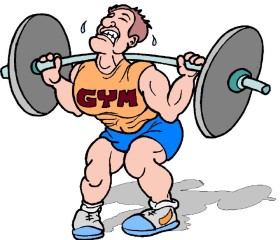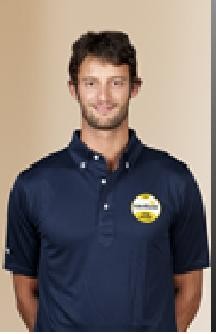
Olympic weight lifting
Now I would like to expose the possible variations we can use and adopt for our athletes who are volleyball players not real lifter.
In fact the real Olympic snatch and clean and jerk are really technical disciplines that need hours of training, hard daily attitude and over flexibility body adaptation.
What we are going to do is to transfer these exercises in our fitness volleyball programs and modify their motion in order to make our athletes able to perform and benefit the most in a safe way.
Explanation of volleyball player’s workouts is helpful to make a division that shows the differences among the clean (and snatch) types:
Squat clean or Full Clean or Clean = start from the floor, catch in a full squat.

clean

snatch
Hang clean = start from the hang position (above or below the knees), catch in the full squat position.

hang clean

hang snatch
Power clean = start from the floor, catch in a quarter or half squat position (the power position).

power snatch

hang power snatch
“Hang” describes where you start. “Power” describes where you catch. “jerk” describes the phase in order to proper the barbell upwards from the standing position.
Starting from the floor and catching on the floor as we described first, are the real Olympic way. It is hard and perhaps dangerous for our athletes that are not professional weight lifter. The best way to safely benefit for our athletes is the Hang power clean because the “Hang” starting position is actually very similar to the volleyball jumps approach angle position and the “Power” catching position trains our body joints to land after the jumps.
For outside hitters I mostly recommend Hang power clean.

For middle blockers
For middle blockers – Hang power snatch and Hang power clean and jerk.
For both setters and middles I use dynamic alternating split jerk that is more conditioning than explosive exercise. For Liberos i ask to perform squat clean to train lower position.Good warm up, proper technique, right weight and good motivation are always necessary when you perform these kind of exercises.
1 or 2 times a week, 3-4 sets each work-out, between 1 and 6 repetitions each set, long rest time (between 2 to 4 minutes), is my weekly training suggestion in season. A well-rounded training program should not be limited to only one area of emphasis but rather should incorporate all components that are specific to the athlete’s sport or activity.
“Enhancing performance and reducing injury should always be the centerpiece of a strength and conditioning program” (Baechle & Earle 2000).
In conclusion, the adaptation of both major training methodologies could illicit a greater return because both parameters are being trained (maximum strength and power). By combining “absolute strength” and explosive training methods, an athlete will have a more complete balance of the skills needed to perform at a high level on the field of play.
In the next chapter we will enlarge our training view including strength training……. Stay tuned!

ALESSANDRO BRACCESCHI
ALESSANDRO BRACCESCHI (Fano, Italy 16/07/1980)
Degrees:
– Degree in accounting (I.T.C Battisti, Fano 1998)
– Degree in Physical Education (with emphasis on Prevention/Rehabilitation)University of Urbino, Italy 2003
Experience:
* 2006-2007 Player and Athletic Trainer “Nuncas Piu Volley Chieri”* 2006-2007 Athletic Trainer “Pallavolo Torino” Men’s Division C, Italy
*2007-2008 Athletic Trainer “Santeramo Sport” Women’s Division A1, Italy
*2007-2011 Athletic Trainer Bulgarian Women’s National and Junior National Teams
*2008-present Athletic Trainer “Vakifbank Gunes Sigorta” Women’s League 1, Turkey Champion’s League